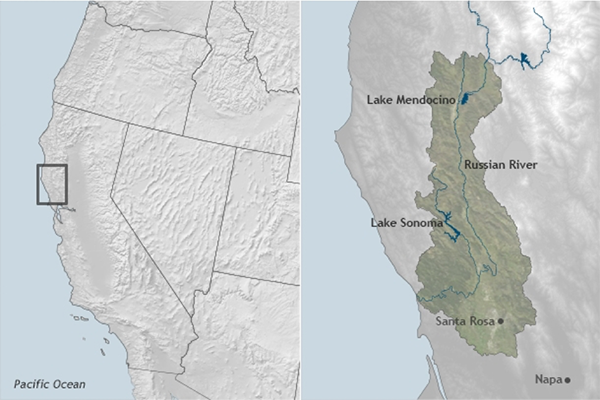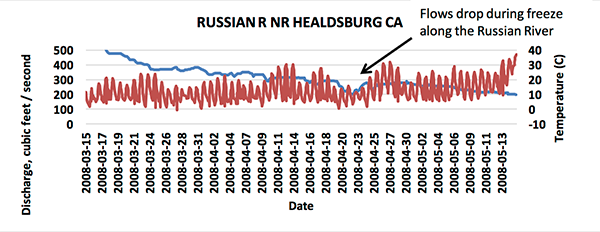Study Reports on Improved Frost Forecasts for Russian River Wine Growing Region
March 21, 2016
A new study by HMT researchers, led by David Reynolds, reports on a four year effort on the development and verification of an automated frost forecast system developed for the Sonoma County Water Agency. The report summarizes the design and development of the automated all digital forecast system. It utilizes real-time vineyard observations to downscale numerical forecast guidance of minimum overnight temperatures. The four year drought in California along with a threatened and endangered salmon population has required the State of California to control the use of Russian River water for spring frost protection of young budding wine-grape vines. Improved forecasts of the location and duration of frost at individual vineyards with increased lead-time could reduce the number of hours of spraying required as well as assure adequate supplies of water are available in off-stream storage systems to reduce demands on tributaries and reduce the threat of fish kills. An automated digital forecast system has been developed and is running routinely to provide vineyard specific temperature forecasts to growers, commercial frost forecasters, and water managers.
The system is based on the use of a high resolution terrain grid and focuses on real-time hourly observations from 72 vineyards located within the Russian Basin. The National Weather Service’s Graphical Forecast Editor software is configured with a .32 by .74km grid resolution and an objective analysis tool was utilized to generate a high resolution observation grid of temperature, dew point, and relative humidity along with computed wet-bulb temperature. The minimum values of each of these parameters are also computed. These observed grids in turn are used to bias correct gridded numerical model and post-processed Model Output Statistics (MOS) guidance grids as well as the NWS official forecast grids using a 30 day regression of forecast versus observed values. Verification shows that for overnight lows (≤ 2°C), the bias correction improves skill in overnight minimum temperature forecasts by a factor of 3 to 4 for most forecast guidance used. The same system can be applied for forecasting summer maximum temperatures (≥38°C) that can stress wine grapes requiring spraying to reduce temperatures.
Contact: David Reynolds

